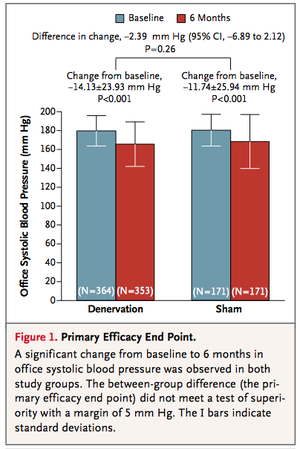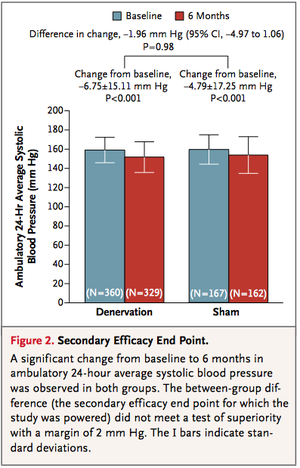Chance News 99
Quotations
Forsooth
Here is a genuine Forsooth:
- "...a [Brazilian] government research agency said recently that 65% of respondents to a national survey agreed that women showing too much of their bodies deserve to be attacked.
- "On Friday, the Institute for Applied Economic Research said it was mistaken and that the true number was actually 26%."
Submitted by Paul Alper
(More details on the corrections can be found here. We read that the finding "was originally represented by a graphic that showed that 42.7 percent of 3,810 respondents agreed with it, 22.4 percent agreed partially, 8.4 percent partially disagreed and 24 percent totally disagreed. The true values, according to IPEA, should have been 13.2 percent strongly agreed with the statement, 12.8 percent partially agreed, 11.6 partially disagreed, 58.4 percent totally disagreed and 3.4 percent remained neutral.")
MedPage TODAY said that “CDC says rates of teen pregnancy have been on the decline over the past 20 years, but that more than one in four teens ages 15 to 17 are still having babies.” If you think that that "one in four teens..." sounds unbelievable, you are correct. The actual CDS statement was “More than 1 in 4 teens who gave birth [emphasis added] were ages 15 to 17....”
A recent article by Stella Dudzic in Significance magazine deals with an analogous situation and mentions developing a curriculum to help people “look at information like this which they encounter in the news, on the internet or while reading a book or report and think about whether it is likely to be true before accepting it.”
Submitted by Emil M Friedman
From the Forsooth! column of StatsLife at The Royal Statistical Society website:
- "The risk of developing cancer falls by 10% for every 10g of fibre eaten, according to a report by Cancer UK." (Feb 2014)
- "The 2.45 at Doncaster: number one, 'Minella Definitely’; that’s a probable certainty.” (Jan 2014)
- "The UK mean income in 2011 was £27,000, but the median income was £21,500. This means that 50 per cent of people earned less than £27,000."
- "In a computer simulation of human behaviour in the layouts exited most swiftly by ants ..., evacuation times were reduced by up to 160 per cent." (Nov 2013)
- "A Chi-squared test was applied to these data, using the formula [chi-squared formula shown]. Chi-squared was calculated as 18 995 and was significant at both the 95% and 99% significance levels." (Nov 2013)
- "The forecasters were predicting only a 10% or 20% chance of rain in Dunedin yesterday, but it turned out to be 100%." (Apr 2013)
- "A fifth of over-30s have never swum in the sea, a tenth have never strolled along a Mediterranean beach and 13 per cent have never been abroad at all." (Feb 2013)
Submitted by Margaret Cibes
Renal denervation
Setback for high blood pressure treatment
by Denise Grady, New York Times, 29 March 2014
According to the article, "In the United States, 67 million people have high blood pressure, and it resists treatment [by drugs] in about 10 percent of them."
Thus, the interest in
The treatment, called renal denervation, [which] involves threading a tube through blood vessels into the renal arteries, [and] then zapping them with radio-frequency energy to kill nerve endings.
The procedure was thought to be a lifesaver for people whose high blood pressure could not be lowered even with multiple drugs. Uncontrolled hypertension increases the risk of strokes, heart attacks and other problems.
Previous “case reports and studies had found astounding drops in blood pressure after the [renal denervation] treatment — as much as 30 millimeters of mercury in systolic pressure, the top number in a blood pressure reading.” Therefore, to the surprise of many, renal denervation failed in a large, rigorous study.
Unlike earlier, unblinded studies, this so-called SYMPLICITY HTN-3 study was
a prospective, single-blind, randomized, sham-controlled trial. Patients with severe resistant hypertension were randomly assigned in a 2:1 ratio to undergo renal denervation or a sham procedure.
The primary efficacy end point was the change in office systolic blood pressure at 6 months; a secondary efficacy end point was the change in mean 24-hour ambulatory systolic blood pressure.
From the figures below, it can be seen that the treatment (renal denervation) and the control (sham treatment) are virtually identical for the primary and secondary efficacy, respectively. That is, for primary efficacy, the treatment failed to beat the control by at least 5 mm HG and for secondary efficacy, the treatment failed to beat the control by at least 2 mm Hg.
Discussion
1. Franz H. Messerli wrote an editorial in the NEJM entitled “Renal Denervation for Resistant Hypertension?” in which he questioned the enthusiasm for the procedure. It has not been approved in the United States but according to Grady,”it has been approved in more than 80 countries and performed on thousands of patients.” She quotes Messerli as saying
You have to perhaps congratulate the Food and Drug Administration that they were not as eager to approve this procedure based on the little evidence there was, as opposed to the Europeans and the Australians.
It [SYMPLICITY HTN-3] is absolutely a landmark study. I hope it will have an impact and will override some of the zeal of the European investigators.
2. As indicated above, the (15) authors of the study regard “clinical (i.e., practical) significance” to be a primary superiority of at least 5 mm Hg or a secondary superiority of at least 2 mm Hg of the treatment over the control. Neither was achieved but with the help of any convenient statistics software, use the numbers in Figure 1 and Figure 2 to show that “statistical” significance was also not achieved in either case for the respective differences between treatment and control.
3. The study also looked at subgroups such as race, gender, age, etc.
Although the differences between groups in some subgroups were nominally significant, the absolute magnitude of the differences was small (<10 mm Hg), and the differences were not significant with the use of a superiority margin of 5 mm Hg or after adjustment for multiple comparisons.
Which “significances” are being discussed here?
4. Point out the similarities of a sham treatment to the use of a placebo when testing drugs. Point out the differences between a sham treatment and a placebo.
Submitted by Paul Alper
Statistics goes to the movies
While the 2012 book Math Goes to the Movies focuses on mathematics, there are several recent articles on statistics in the movies, all written by Michael A. Lewis (Hunter College School of Social Work).
"The search for 'Divergents' and measurement error", Significance, April 7, 2014
"The Silver Linings Chi-Square Playbook", Significance, February 12, 2013
"Probability and Game Theory in The Hunger Games", Wired Social Blogs/Social Dimension, April 10, 2012
"Mathematics and The Hunger Games", Journal of Humanistic Mathematics, July 2012
Submitted by Margaret Cibes

